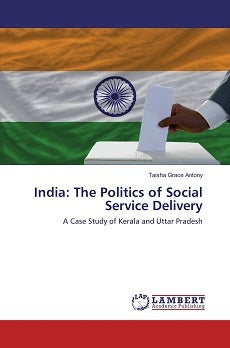
| Title: | India: The Politics of Social Service Delivery |
| Author/s: | Taisha Grace Anthony |
| Abstract: | India today is an economic and military power and a regional super power on its own right, with unique democratic credentials. At the same time, it is also home to about 270 million people living below the poverty line. This huge population that is unable to make ends meet points to a larger problem of poor performance in the social sector, as health capital and knowledge capital together form the human capital, which in turn determines the productivity and growth of the economy. Given that India is a vast and diverse country with a well-developed federal structure of governance, understanding India’s social service delivery mechanism would warrant an understanding of the conditions and circumstances in the constituent states. This book focuses on certain factors in the political economy, apart from the established political institutions, that have the potential to influence the electoral accountability of the incumbent government. This analysis should help shed some light on the important determinants of social service delivery in India, which could help theorists and policy makers better understand the dynamics of development in emerging or successful democracies like India. |
| Date: | 13 December 2016 |
| More From: |

| Title: | Kautilya’s Arthasastra An Intellectual Portrait-Classical Roots of Modern Politics in India |
| Author/s: | Subrata K. Mitra and Michael Liebig |
| Abstract: | Kautilya who? In India itself, Kautilya is mentioned for reasons that are more sentimental and nationalistic than analytical and comparative with respect to the theoretical significance of his contributions to statecraft. In academic circles, Kautilya is labelled as the 'Indian Machiavelli', even though the Arthashastra was written some 1800 years prior to Machiavelli's Discorsi and Principe and is much broader in scope. This book brings the wisdom of Kautilya's text-a tour de force in strategic thinking-to the present political discourse, emphasizing the relevance of this ancient text to contemporary world affairs. Brilliant scholarly analysis complemented with in-depth academic enquiry gives this work an edge over all that has been written on Arthashastra so far. Mitra and Liebig move beyond romanticizing Kautilya and present to the reader one of the sharpest minds in history, unmatched in its knowledge of statecraft and a theory unparalleled in strategic thinking. A must-have guide to understanding both Kautilya and the intricacies of governance. |
| Date: | 1 November 2016 |
| More From: |
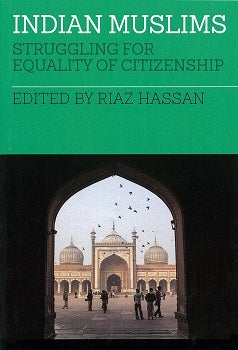
| Title: | Indian Muslims: Struggling for Equality of Citizenship |
| Author/s: | Riaz Hassan |
| Abstract: | Research shows that Indian Muslims experience higher levels of development and equity deficits. Indian Muslims are also predicted to become the largest Muslim population in the world by 2050. This increase in numbers might exacerbate their relative deprivation, creating a disjunction between India's constitutional promises of "" equality of opportunity "" for citizens of a secular democracy-including for minorities-and the existential reality. This will create social and political conditions that could undermine the stability of the country's democracy and make Indian Muslims a security threat, which would have not only national but also global ramifications. This book examines the struggle for equality of citizenship of Indian Muslims in light of the release of the Sachar Committee report of 2006, which sparked widespread awareness of socioeconomic disparity and exclusion of religious minorities in India, especially Muslims. The contributors are some of the most eminent social scientists in the fields of applied economics, politics, sociology and demography who work on Indian issues. The Indian state and its political infrastructure have been relatively successful thus far in countering the challenges presented by the diversity of its population. India therefore has the capacity and the ability to deal with these new challenges, given the political and collective will. sociology and demography who work on Indian issues. The Indian state and its political infrastructure have been relatively successful thus far in countering the challenges presented by the diversity of its population. India therefore has the capacity and the ability to deal with these new challenges, given the political and collective will. sociology and demography who work on Indian issues. The Indian state and its political infrastructure have been relatively successful thus far in countering the challenges presented by the diversity of its population. India therefore has the capacity and the ability to deal with these new challenges, given the political and collective will. |
| Date: | 17 October 2016 |
| More From: |
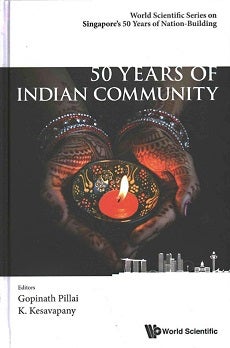
| Title: | 50 Years of Indian Community |
| Author/s: | Gopinath Pillai and K. Kesavapany |
| Abstract: | From Tamils to Malayalees, from Bengalis to Punjabis, the diverse Indian community in Singapore has played a large part in building the country. To understand the Indian community, one must know certain basic facts about them.
First is their love for culture which transcends religious and linguistic differences. Some of the best classical Hindustani singers are Muslims. The best Malayalam singer of Hindu religious songs is a Christian. Second is their love of debates. Argument is part of Indian tradition because of the belief that truth can only be arrived at vigorous debate. The third characteristic is the community's respect for education. Indians, across castes and religions have always venerated knowledge and learning as being a value in itself. The fourth characteristic of the Indians is their devoutness: they take their religious duties seriously and perform them regularly. This celebratory volume highlights the progress, contributions and challenges of the community for the past 50 years since Singapore's independence in 1965. |
| Date: | 8 August 2016 |
| More From: |
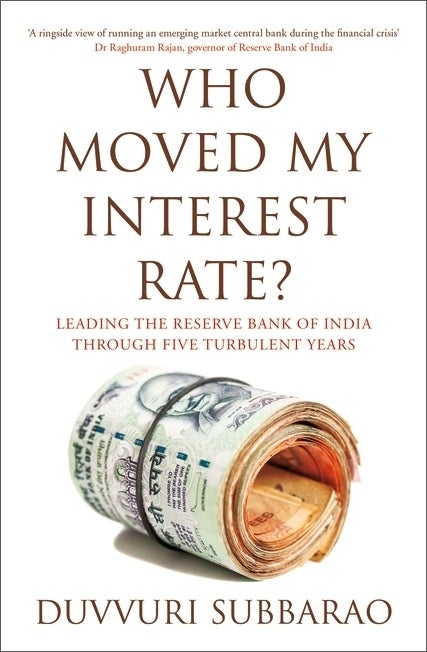
| Title: | Who Moved My Interest Rate |
| Author/s: | Duvvuri Subbarao |
| Abstract: | Duvvuri Subbarao’s term as the governor of the Reserve Bank of India from 2008 to 2013 was by all accounts an unusually turbulent period for the world and for India. The global financial crisis erupted within a week of his assuming office. Then, just as the impact of the crisis on India ebbed, the action shifted to combating a decade-high, stubborn inflation during 2009-11, which segued into a battle against a sharp depreciation of the rupee starting mid-2012. Who Moved My Interest Rate is an insider’s account of the dilemmas and quandaries Subbarao confronted while leading the Reserve Bank through these extraordinary economic and political challenges? Subbarao’s five years at the Reserve Bank also marked an intellectually vigorous period for central banking around the world. Not only did the global financial crisis test the policy force of central banks, but it also raised several questions about the breadth of their mandates and the limitations of their autonomy and accountability. While much of the existing debate is set in the advanced economy context, Who Moved My Interest Rate places these issues squarely in an Indian and emerging market perspective. This is also a compelling chronicle of Subbarao’s attempts to demystify the Reserve Bank and explain to the public its impact on their everyday lives. Honest, authoritative and deeply insightful, this book enhances our understanding of what is, arguably, one of India’s most trusted institutions. |
| Date: | 27 July 2016 |
| More From: |
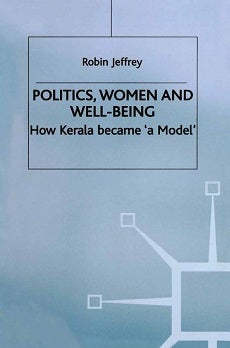
| Title: | Politics, women and well-being: How Kerala became ‘a model’ |
| Author/s: | Robin Jeffrey |
| Abstract: | In 1990, Kerala on the southwestern coast has India's lowest infant mortality, longest life expectancy and highest female literacy. India's 'problem state' of the 1950s has become 'the Kerala model'. The collapse of a matrilineal social structure and a rigid caste system contributed to widespread politicization. Women retained a circumscribed but influential position in social life. The result is an instructive analysis for students of politics, development policy and women's issues. |
| Date: | 27 July 2016 |
| More From: |
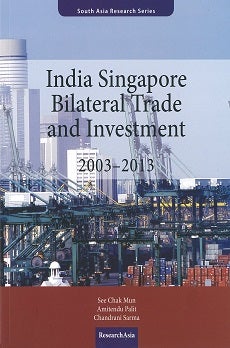
| Title: | India Singapore Bilateral Trade and Investment 2003 – 2013 |
| Author/s: | See Chak Mun, Amitendu Palit and Chandrani Sarma |
| Abstract: | This study is an attempt to analyse the Singapore-India economic relationship with a particular focus on its trends and changes in structural patterns during the last decade. The study begins from the year 2003, when the Indian economy moved to a new high growth trajectory, marking the beginning of a robust period of economic engagement with Singapore. The analysis concludes at 2013. Apart from identifying the key patterns in bilateral trade and investment and the factors responsible for producing changes in these patterns over time, the study reflects on the future trend of the economic relationship. |
| Date: | 1 May 2016 |
| More From: |
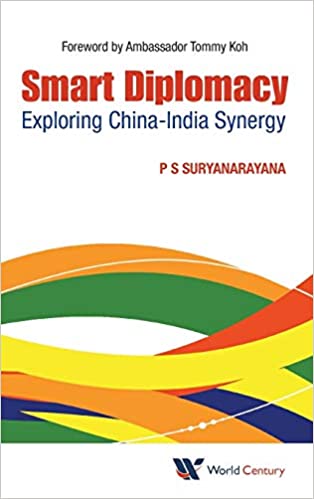
| Title: | Smart Diplomacy – Exploring China-India Synergy |
| Author/s: | P. S. Suryanarayana |
| Abstract: | This book explores the diplomatic, political, strategic, and ideological cross-currents in the fragile but promising state-to-state relationship between China and India. Set in a geopolitical context ten years after the two Asian neighbours had agreed to fashion a Strategic and Cooperative Partnership for Peace and Prosperity, the analysis is focused on the promise as well as the portents. Looking ahead, the author envisions a sunrise idea of SinoÔÇôIndian Smart Zone as a possible post-modern scenario.ÔÇï Published by: World Century Publishing Corporation 27 Warren Street, Suite 401-402, Hackensack, NJ 07601, USA. |
| Date: | 28 April 2016 |
| More From: |
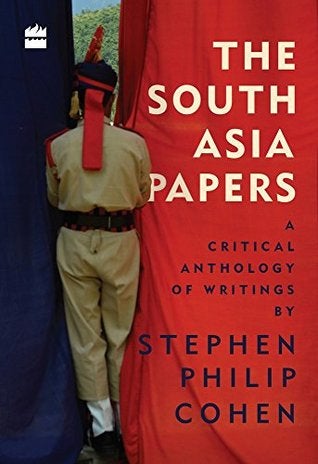
| Title: | The South Asia Papers: A Critical Anthology of Writings by Stephen Philip Cohen |
| Author/s: | Stephen Philip Cohen |
| Abstract: | Stephen Philip Cohen, the Brookings scholar who virtually created the field of South Asian security studies, has curated a unique collection of the most important articles, chapters, and speeches from his fifty-year career. Cohen, often described as the “dean” of U.S. South Asian studies, is a dominant figure in the fields of military history, military sociology, and South Asia’s strategic emergence.
Cohen introduces this work with a critical look at his past writing—where he was right, where he was wrong. This exceptional collection includes materials that have never appeared in book form, including Cohen’s original essays on the region’s military history, the transition from British rule to independence, the role of the armed forces in India and Pakistan, the pathologies of India-Pakistan relations, South Asia’s growing nuclear arsenal, and America’s fitful (and forgetful) regional policy. |
| Date: | 12 April 2016 |
| More From: |
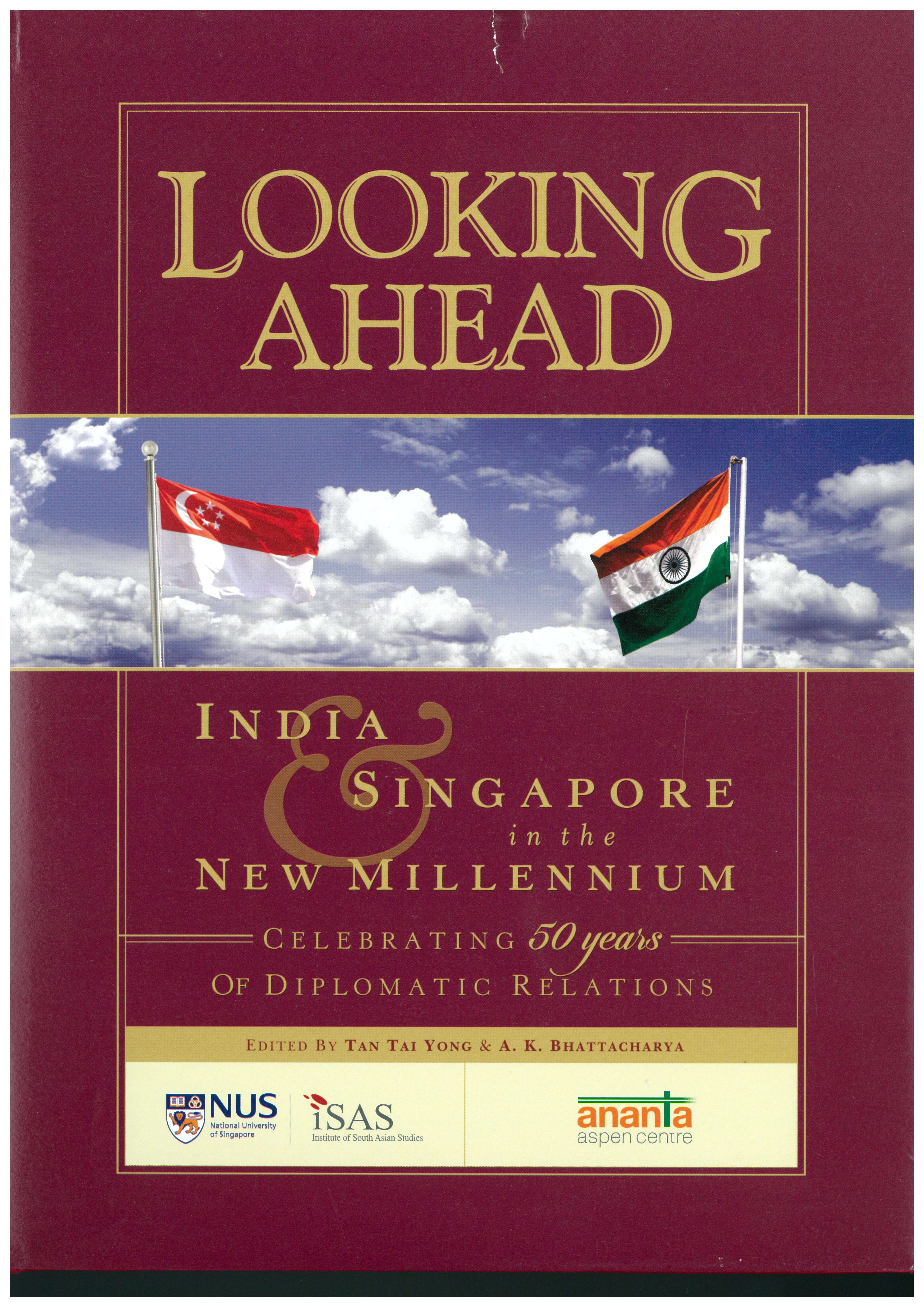
| Title: | Looking Ahead: India and Singapore in the new millennium |
| Author/s: | ISAS-NUS & Ananta Aspen Centre |
| Abstract: | This volume then commemorates 50 years of diplomatic relations between India and Singapore and highlights some of those diverse areas. It also explores the less well-known facets about the political, economic, commercial, and social engagements between the two countries during the last five decades. It is imperative to highlight these facets as Singapore and India draw closer to each other in a post-Cold War globalized world. It appears today that this engagement was the normal course of history and that the Cold War disengagement was but a short-term aberration. Both countries are of the view that India is an Asian political and economic giant that should play its legitimate role in the Asian and global political and economic order.
This volume brings together eminent scholars and public personalities who have participated in the making of India and Singapore relations. Many of the authors have directly contributed to the development of diplomatic relations between India and Singapore. Readers will therefore benefit from a ring side view of the evolution of this relationship over the last several decades. |
| Date: | 7 April 2016 |
| More From: |
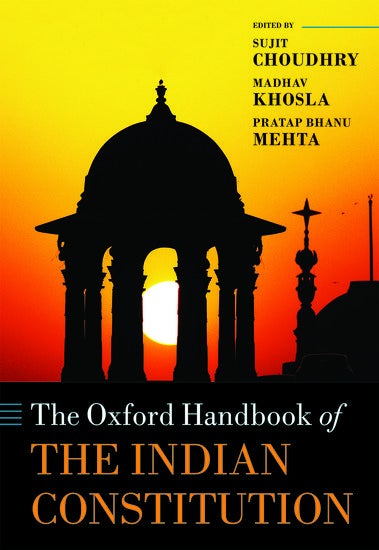
| Title: | The Oxford Handbook of the Indian Constitution |
| Author/s: | Sujit Choudhry, Madhav Khosla and Pratap Bhanu Mehta |
| Abstract: | The Indian Constitution is one of the world's longest and most important political texts. Its birth, over six decades ago, signalled the arrival of the first major post-colonial constitution and the world's largest and arguably most daring democratic experiment. Apart from greater domestic focus on the Constitution and the institutional role of the Supreme Court within India's democratic framework, recent years have also witnessed enormous comparative interest in India's constitutional experiment.
The Oxford Handbook of the Indian Constitution is a wide-ranging, analytical reflection on the major themes and debates that surround India's Constitution. The Handbook provides a comprehensive account of the developments and doctrinal features of India's Constitution, as well as articulating frameworks and methodological approaches through which studies of Indian constitutionalism, and constitutionalism more generally, might proceed. Its contributions range from rigorous, legal studies of provisions within the text to reflections upon historical trends and social practices. As such the Handbook is an essential reference point not merely for Indian and comparative constitutional scholars, but for students of Indian democracy more generally. |
| Date: | 24 March 2016 |
| More From: |
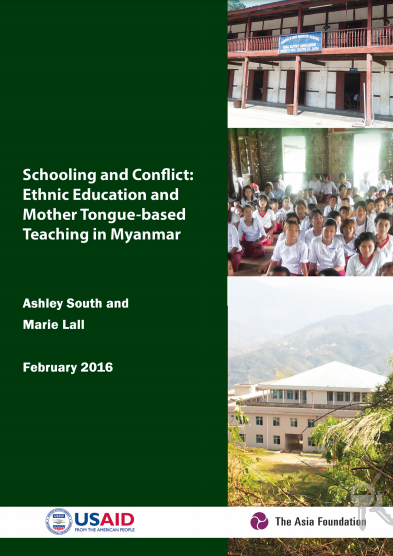
| Title: | Schooling and Conflict: Ethnic Education and Mother Tongue-based Teaching in Myanmar |
| Author/s: | Ashley South and Marie Lall |
| Abstract: | Education and language policies and practices are at the heart of ethnic conflicts in Myanmar. For decades, the state has emphasized a centralized, Myanmar language only education system that many ethnic groups felt provided no place for their own languages to be practiced which by extension, threatened their cultures and ethnic identities. The country’s democratic transition of the past few years, however, has enabled issues of mother tongue-based education (MTB) to be discussed more openly, and growing acceptance of decentralization within the government at all levels and among the wider public is providing an opening for consideration of how MTB education can be productively integrated into the education system. |
| Date: | 1 February 2016 |
| More From: |
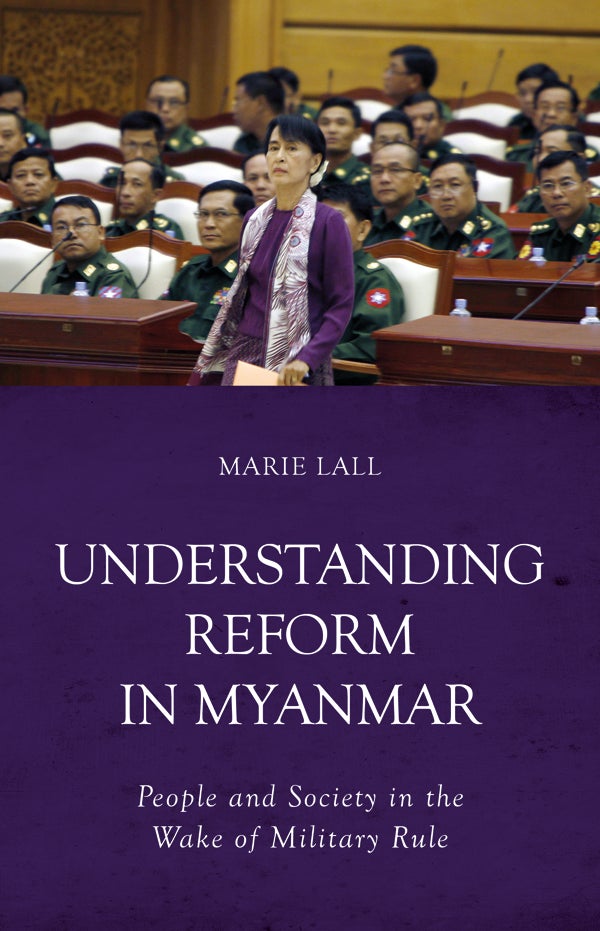
| Title: | Understanding Reform in Myanmar: People and Society in the Wake of Military Rule |
| Author/s: | Marie - Lall |
| Abstract: | Marie Lall’s book seeks to uncover and explain the recent political and economic reforms implemented in post-military Myanmar, focussing on the key turning-points that ushered in the current transformation programme, particularly those affecting education, NGOs and social justice.
She maps the main reform priorities, explaining how they are interconnected, and what has been achieved, which amount to the first tentative steps towards ‘democratisation’, albeit under the umbrella of President Thein Sein’s controlled and more inclusive governance. Beyond the building site that is now Yangon, burgeoning urban car ownership and ubiquitous mobile phone use, there remains a widening gap, sharpened by inflation, between rural and urban Myanmar, at social, economic and political levels. Peasants are losing their livelihoods to development schemes that are being created to bring in foreign investment, and social justice is largely absent from the country’s reform agenda. While the country has changed significantly, has the West been gulled into mistaking ‘discipline-flourishing democracy’ for true participatory democracy? Will the hopes of Aung San Suu Kyi coming to power in Yangon at the head of the National League for Democracy through an open and fair ballot ever be realised? These and other questions are scrutinised in this shrewd analysis of post-military Myanmar. |
| Date: | 1 February 2016 |
| More From: |
Load more


